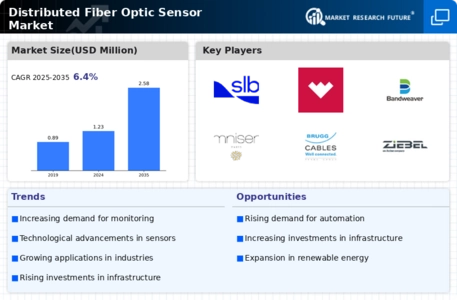By Region, the study provides market insights into North America, Europe, Asia-Pacific, Middle East & Africa, and South America. In terms of revenue, Asia Pacific held the largest share of 39.2% in the Distributed Fiber Optic Sensor market in 2022 and is expected to maintain its dominance during the forecast period. The Asia pacific is the largest market for Distributed Fiber Optic Sensor. Asia-Pacific has been divided into China, Japan, South Korea, rest of Asia-Pacific. Asia-Pacific dominates the distributed fiber optic sensors market.
The significant development of fiber optic distributed sensor technology in Asia-Pacific is responsible for increasing penetration of transportation infrastructure in developing countries like China and India. The distributed fiber optic sensors market in the Asia Pacific is also being driven by the growing demand for data-driven decisions in industries such as civil engineering, energy & utilities, etc.
China greatly influences the oil and gas industry in Asia-Pacific and holds the largest market share in Asia-Pacific. According to the EIA, China was one of the first countries in this region to modernize its oil and gas industry and is the fifth largest oil producer in the world. China recently established the National Oil and Gas Pipeline Network Group to jointly operate pipelines owned by Chinese National Offshore Oil Corporation Limited, China National Petroleum Corp and Sinopec Group to facilitate pipeline expansion. Increasing investments in China's civil infrastructure and military expansion boost market growth.
Figure3: DISTRIBUTED FIBER OPTIC SENSOR MARKET SIZE BY REGION 2022 & 2032

Source: Secondary Research, Primary Research, MRFR Database, and Analyst Review
Further, the major countries studied in the market report are the U.S., Canada, Germany, France, the UK, Italy, Spain, China, Japan, India, Australia, South Korea, and Brazil.
North America hold the second-largest market share for distributed fiber optic sensors worldwide as companies in this region rapidly adopted new technologies into their operations. The growing demand for distributed fiber optic sensors in offshore industries such as oil and gas are propelling the growth of this market in this region. The US has a sizable oil and natural gas industry, encouraging a higher adoption rate for distributed fiber optic cables. Hydraulic fracturing and horizontal drilling, using high-power optical fibers, helped the US extract about 35.81 trillion cubic feet of natural gas in 2022.
To increase their ability to generate profits, oil and gas companies are being encouraged in the face of rising crude oil prices to introduce more accessible and efficient production systems. This expands the growth potential of the distributed fiber optic sensor market.
Europe comprises Germany, the UK, France, Italy, Spain and the rest of Europe. The Europe region achieved significant revenue in 2022 due to technological advancements, which contributed to the growth of fiber optics. The growing demand needs to deploy faster internet services and better-connected infrastructure. This is advancing service providers to install fiber optics to meet the needs and requirements of people. The region experiences continuous technological advances that contribute to developing and adopting-edge technology products.
It is expected to encourage the companies catering to this market to invest more in R&D and develop more improved products to flourish in the regional market.
The Middle East and Africa include South Africa, GCC countries, and the rest of MEA. In the Middle East, the GCC countries have the highest market share. The growth of the Middle East market is mainly due to the increasing use of distributed fiber optic sensors in the gas and oil sector. In addition, regional investments have become more diverse and new possibilities are being explored, such as LNG and more complicated offshore projects.
For example, in 2022, the Abu Dhabi National Oil Company (ADNOC) announced its plans to increase its oil production capacity from 2022 to 5 million barrels per day in 2025, above the previous 2030 target. These plans should lead to increasing demand for fiber optic sensors.










